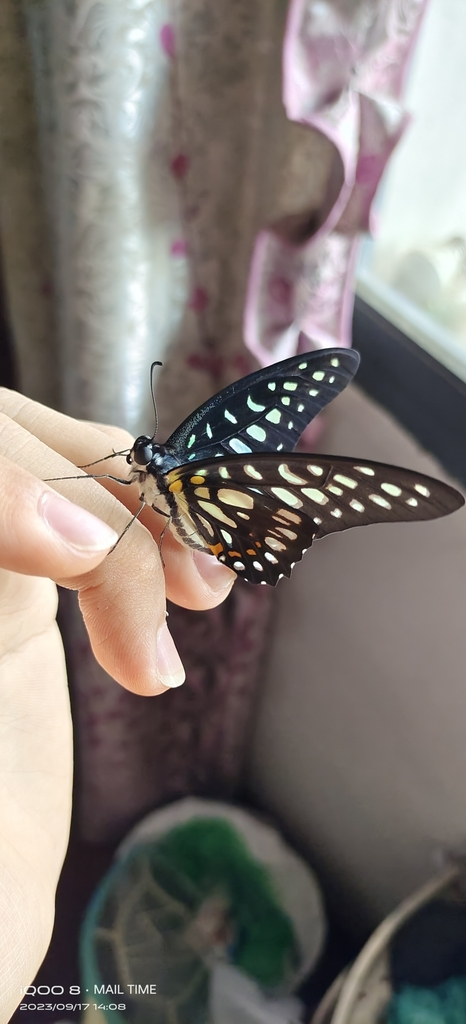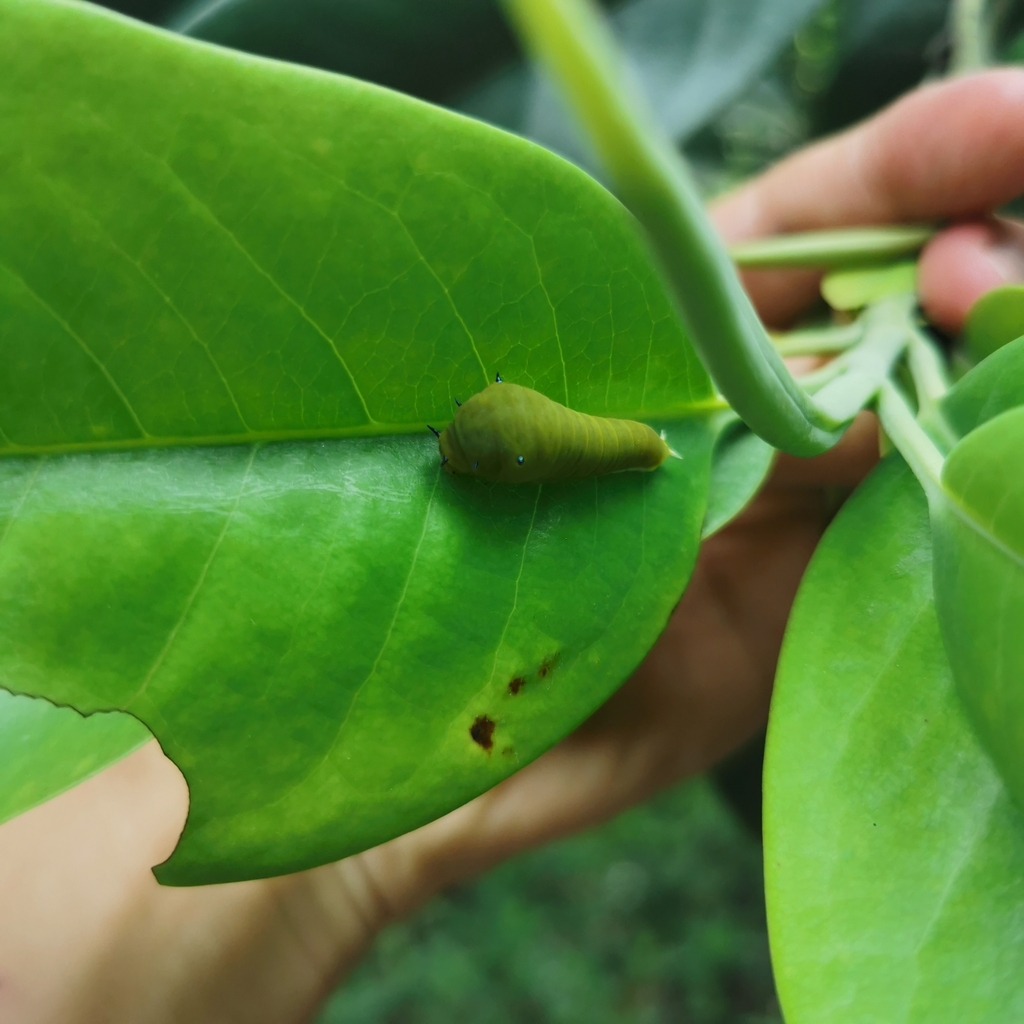As recently as the 1980s, when Graphium chironides was first recognized as a species, it was seen as a subspecies of something called Graphium batjanensis. Why has this web site not featured G. batjanensis in its turn? Because that species name is no longer used. G. chironides is now considered a full species and G. batjanensis is an obsolete classification.
These things change over the years. The species lists I'm using now are different from the ones that were printed when I was a child; the ones your children consult will be different from the ones I'm consulting. The scientific study of butterflies is very far from being carved in stone.
The species now called Graphium chironides was first named Papilio chiron. Chironides meant a son , or sons, of Chiron and would have been used as a title or nickname of any son of a man of that name. The butterflies called chironides were seen as an aberrant variety of chiron (see https://archive.org/details/novitateszoologi02lond/page/438/mode/1up?view=theater ), The chiron form was later reclassified into a different species name, and chironides rmeained the name of this species. The Swallowtails were named after heroes of ancient literature, and Chiron was a memorable hero, sometimes described as a centaur--half horse and half human--and sometimes, more soberly, as one of the first people the ancient Greeks met who had learned to ride horses. He was remembered as a teacher of the arts of riding, shooting arrows with a bow, and other things. His name meant "hand."
Anyway, scientists debated the taxaonomy of Papilio chironides and gave it other names over the years. It was classified as a subspecies of Graphium bathycles as well as G. batjanensis.
It is black and white, with iridescent pale spots, but the quality of iridescence varies. Some of its spots appear "silvery white" in some lights, some pale blue or green, and some yellow. It has a few red or orange spots on the hind wings. The wingspan is about three and a half inches. (The Jays would be described as a family of large butterflies in the US, but are described as a family of small butterflies in southern Asia, where the super-size Birdwings and Attacus atlas fly.)
Photo by Stephen0706, taken in May in China. The underside of the wings can look brown and yellow, or black and blue. The colors depend on the light but some of the butterfly's spots always look bluer or yellower than others.
Similar-looking butterflies are found across southern Asia. Some are currently classified as subspecies of chironides with subspecies names like malayanum, chinensis, clanis, and tereus. Sources that list subspecies don't agree on names or numbers of subspecies.
The subspecies malayanum is especially similar to Graphium bathycles bathycloides. It was easy for scientists on the Malay Peninsula to lump these species together when individuals of these subspecies are hard to distinguish on sight. Recently some scientists doing a DNA study challenged themselves with two especially confusing specimens....
Has an Intelligent Designer really arranged things to confuse the wise, and revealed wisdom to babies? Are we better off just saying "Pretty butterfly!"? People who think we are fail to explain why even the child saying "Pretty butterfly!" wants to know more.
In the case of Graphium chironides, that thirst for knowledge has led to mapping the butterfly's genome:
Graphium chironides is very widespread, but apparently not very common in any part of its range. One observer described a butterfly watching trip by listing the Graphiums in otder of the number the observer saw, from G. sarpedon down to G. chironides.
Graphium chironides pollinate a variety of flowers and sip water from shallow puddles or damp soil. Butterflies who like salt may be easily encouraged to lick a sweaty human hand.
Most Swallowtail butteries and caterpillars have a distinctive odor. Some are described as sweet and fruity, some as unpleasant. One source described the odor of Graphium chironides as unpleasant.
Young caterpillars are brown and have humped backs, concealing osmeteria, and pointed tails. Older caterpillars are green and have small eyelike spots where their shoulders would be, if they had shoulders.
Pupae resemble mature caterpillars with flatter head ends and more pointed tail ends.
This species is found in warm climates with little seasonal variation, and appears to be active all through the year. Whether it has discrete generations or overlapping ones, my sources did not say.










No comments:
Post a Comment